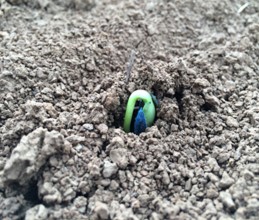
Sunflowers have the advantage over soybeans and corn in regions with dry conditions like central and western North Dakota and South Dakota. “Under moisture stress, corn and soybeans won’t yield very high. Add in the high cost of production for those crops and sunflowers are going to look really good,” says Nuseed’s Fred Parnow.
“Farmers that treat sunflowers as their best cash crop will be rewarded greatly. You can make good money with sunflowers. It’s a phenomenal crop,” he says.
Adding sunflowers to the rotation also helps farmers reduce crop production risks, such as disease and insect pressure, environmental stress, and harvest timing, says Alison Pokrzywinski, Nuseed’s technical agronomist.
For instance, many sunflower pre-plant or pre-emergent herbicides employ different modes of action than those commonly used in other crops, reducing weed pressure and preventing herbicide resistance in fields. Furthermore, extending and diversifying crop rotation reduces disease and insect pressure in general, says Pokrzywinski.
Because they are a deep-rooted crop, sunflowers thrive under drier conditions with fewer fertility inputs than other crops. Sunflowers can access moisture deep in the root zone as well as utilize nutrients that may be leached down in the soil profile. Not only are sunflowers beneficial for resource utilization, the crop helps producers manage environmental risks, such as inclement weather or drought.